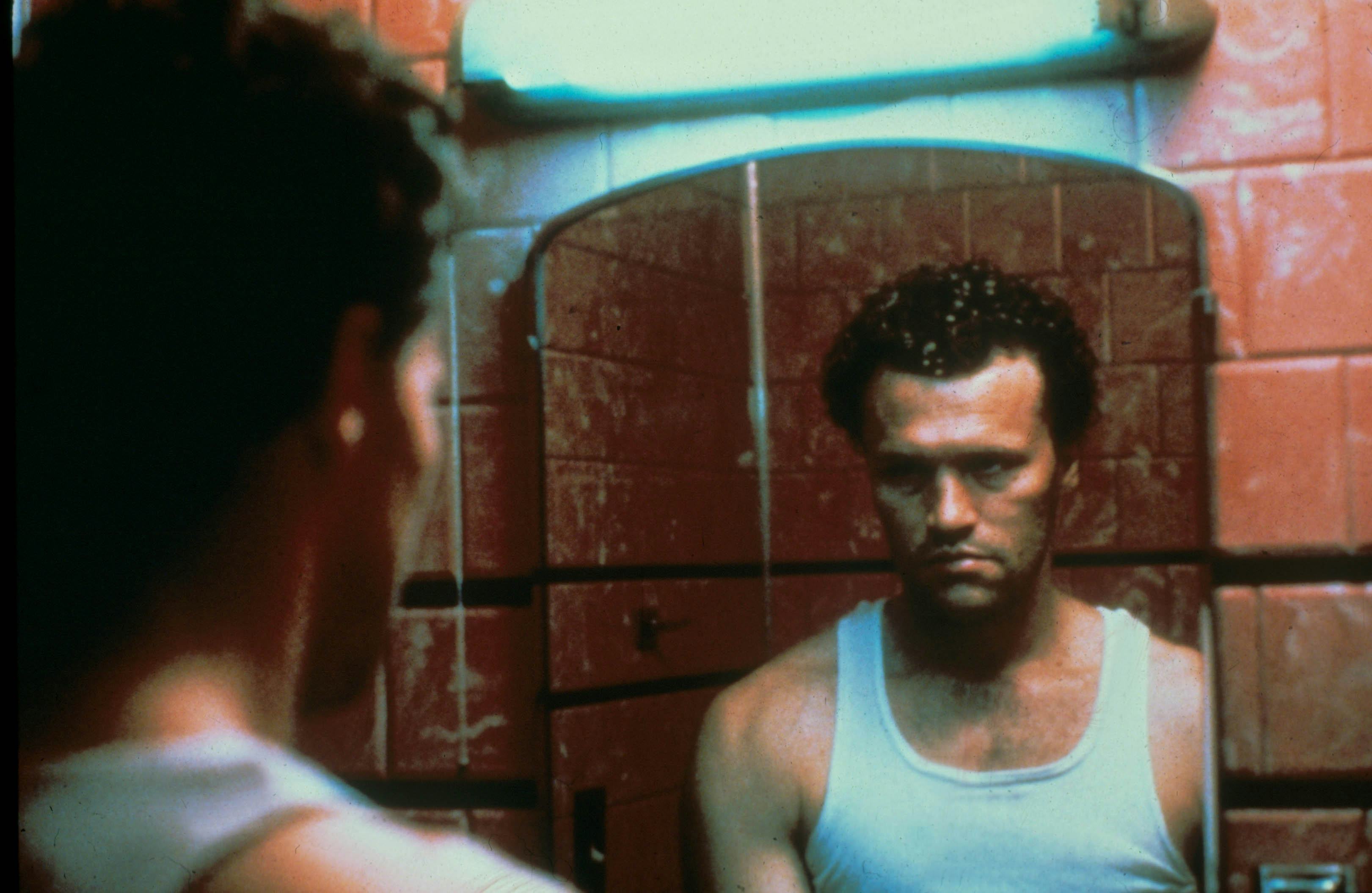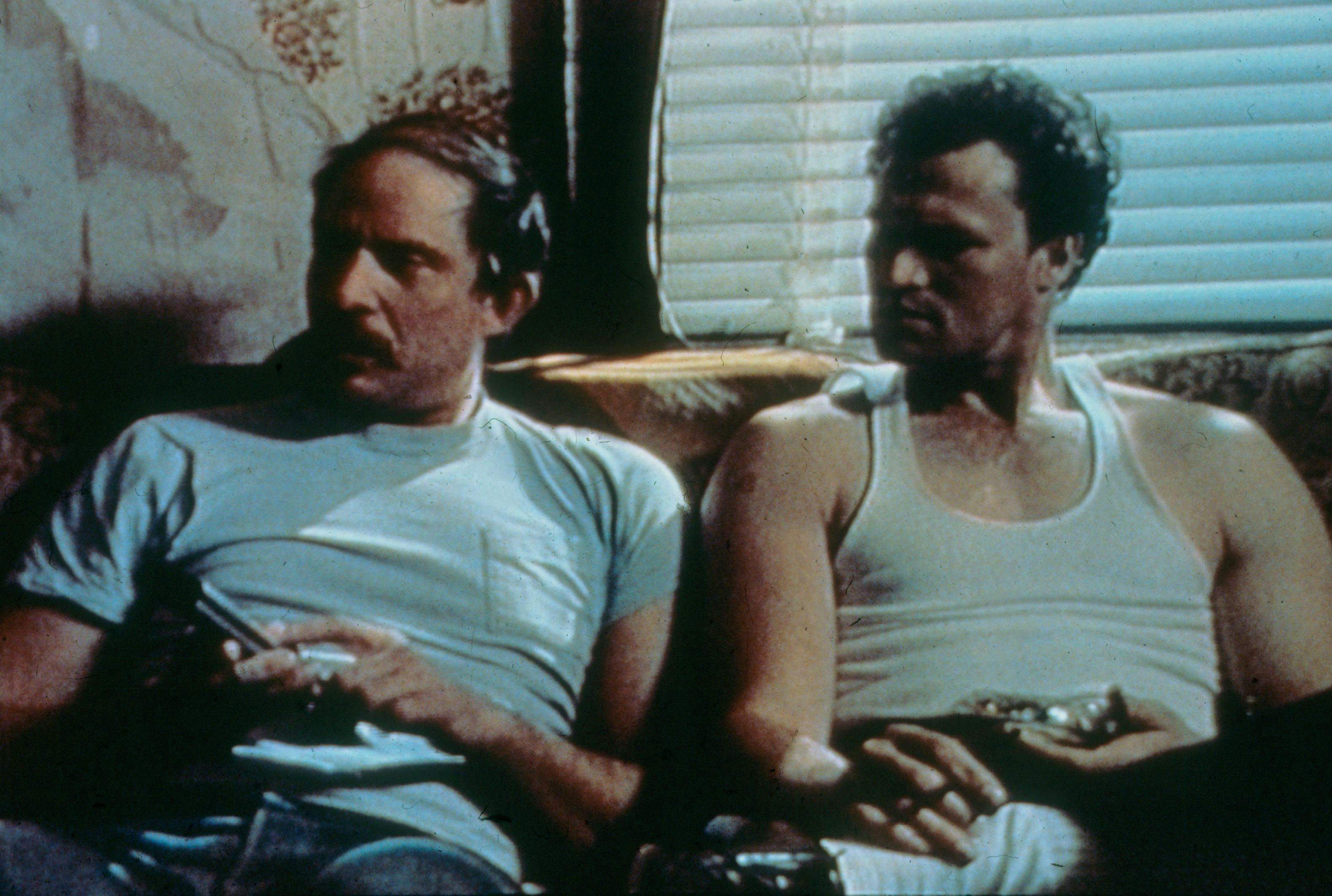
Every once in a while a horror movie comes along that becomes a landmark in the genre — but is also the kind of film that makes you feel like you need to take a long, hot shower after you watch it. Wes Craven’s original The Last House on the Left is one of those. So is Tobe Hooper’s The Texas Chain Saw Massacre. And the same goes for John McNaughton’s Henry: Portrait of a Serial Killer, a movie so grim, so unremittingly bleak, that it took five years for the producers to find someone to release the damn thing.
Henry stars Michael Rooker (making his frighteningly intense screen debut long before starring in The Walking Dead and the Guardians of the Galaxy movies) as a fictionalized version of Henry Lee Lucas, a notorious real-life serial killer who was convicted of murdering 11 people, but at one point claimed responsibility for hundreds more (though he later said he was lying) over a roughly 23-year period. While the narrative conflates facts about Henry’s life with events conceived for the movie, McNaughton and co-writer Richard Fire weren’t interested in making a documentary.
With a budget of around $110,000, McNaughton (making his feature debut as director) shot Henry in and around Chicago on 16mm, mostly over the course of one month in 1985. The idea was to make almost an anti-horror film: During an era when increasingly slick slasher movies were all the rage — and the killers slowly morphed into semi-protagonists, dispatching generic victims in outlandishly gory ways — Henry strove to show the everyday life of a mass murderer in the most mundane fashion possible, making his actions and shifting, ambiguous motivations all the more unsettling.
When we meet Henry, he’s already sharing an apartment with Otis Toole (Tom Towles), a small-time drug dealer and sexual predator whom he met in jail while serving time for killing his mother. The pair are joined in the apartment by Otis’ sister Becky (Tracy Arnold), who is escaping an abusive relationship. Becky is gradually attracted to Henry, who’s polite and inexplicably kind to her, as opposed to her disgusting brother, who luridly hints at wanting to violate his sibling. Even as Henry takes Otis on a sadistic spree of random, brutal murders — which Otis develops a taste for as well — the tensions in the makeshift household eventually explode into violence and an unspeakably depressing finale.
There’s little direct bloodshed in the first half of Henry; a chilling opening montage cuts between Henry going about his daily routine and brief images of the carnage he’s left behind at various locations, the screams of his victims echoing on the soundtrack. As Henry introduces Otis to his nocturnal activities, the onscreen mayhem becomes more graphic and sickening, including one nearly unwatchable massacre of a family in their home. But that’s the point: this is an ugly film about ugly people in ugly circumstances, and it does not offer the viewer the same “entertainment value” as standard slasher fare.

The production company behind Henry, the Chicago-based MPI, premiered the film at the Chicago International Film Festival in September 1986 and took it to several other festivals after that, but distributors (including Atlantic Releasing and New Line Cinema) were leery to touch it — especially when the MPAA slapped an “X” rating on it. In his rave review of the film, Roger Ebert said that the MPAA could not suggest edits that would make Henry qualify for an “R” — apparently its violence and pervasive unpleasantness were too woven into the fabric of the movie itself to make any cuts possible (Henry was one of several films instrumental to the creation of the “NC-17” rating for non-pornographic adult fare).
As a result, Henry went unreleased for the next four years, with a small outfit called Greycoat Films eventually picking it up after it played at the Boston Film Festival in 1989. It opened in Boston, New York, Austin and a few other cities in 1990 — half a decade after filming began — but never got a wide release because it went out unrated, which made distribution just as challenging as if the filmmakers had acquiesced to the “X” issued by the MPAA. Despite this, it was nominated for five Independent Spirit Awards including Best Picture, Best Director, and Best Actor, and became a cult hit on home video.
Time has not sanded the edges off Henry at all. This is a movie about a seemingly soulless person, living on the fringes of American life, who slaughters people for no reason in cruel, shocking ways, without the camp value of a Jason or good ol’ wisecracking Freddy to ease the viewer’s mind. Although it took five years, Henry deserved its day in the sun, and continues to shine a light on the workings of a sociopathic mind in the most convincingly harsh way possible, with no relief or resolution in sight.







